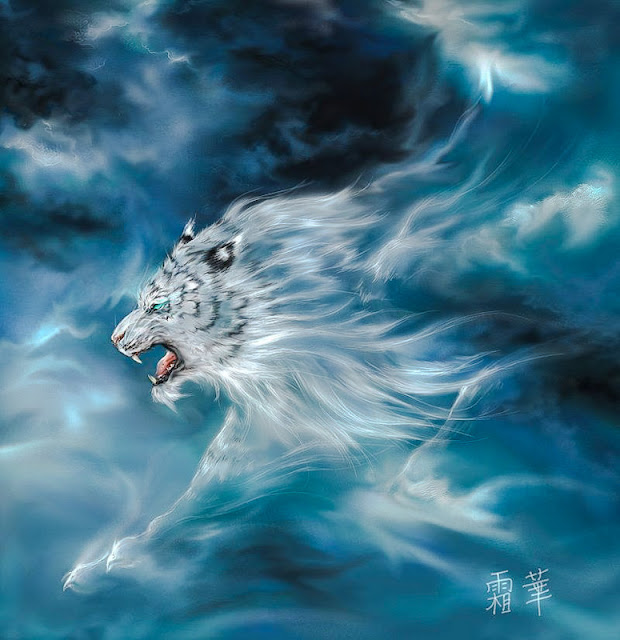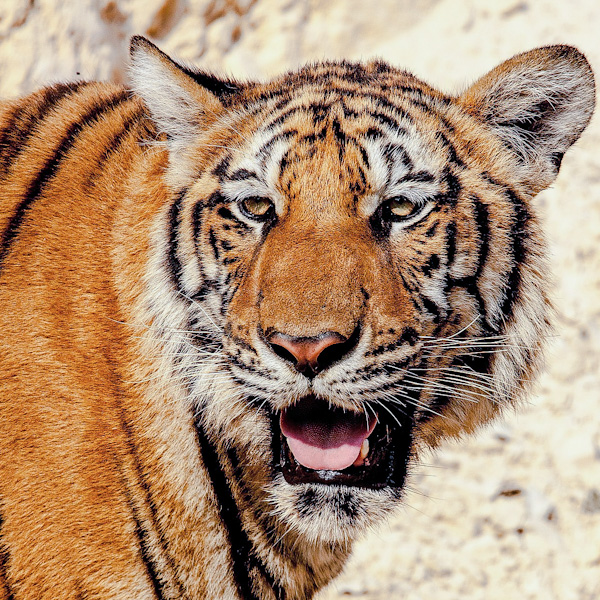How Tigers Kill
Tigers use two techniques to kill prey depending on prey size.
Small Prey
Small animals are usually killed with a bite to the back of the neck. This is mirrored in the killing technique of domestic cats (a bit to the nape of the neck severing the spinal cord).
A canine tooth (the large teeth at either side of the mouth at the front) is inserted between the vertebrae forcing them apart which severs the spinal cord. This is a precise action. In domestic cats the whiskers play a significant role in feeling the position to bite especially in the dark. Cats "have numerous mechanoreceptors associated with the canines". It is thought that the tiger can feel with the canine teeth to position them between the vertebrae. The jaws contract very fast. Perhaps the jaws contract and expand to let the tips of the canines position and reposition by feel until the correct location is found. The success rare concerning positioning is high but not 100%.
Large Prey
These are killed by a throat bite, frequently below the jaw and neck. This crushes the animal's trachea. The bite is held for a considerable time even after the animal stops struggling. The animal cannot stand up if the tiger retains the bite next to the ground.
The throat bite is used as a safety precaution and a more efficient system by the tiger as it avoids horns etc. muscled necks and protective manes.
 |
| Image by Gerhard G. from Pixabay |
Small Prey
Small animals are usually killed with a bite to the back of the neck. This is mirrored in the killing technique of domestic cats (a bit to the nape of the neck severing the spinal cord).
A canine tooth (the large teeth at either side of the mouth at the front) is inserted between the vertebrae forcing them apart which severs the spinal cord. This is a precise action. In domestic cats the whiskers play a significant role in feeling the position to bite especially in the dark. Cats "have numerous mechanoreceptors associated with the canines". It is thought that the tiger can feel with the canine teeth to position them between the vertebrae. The jaws contract very fast. Perhaps the jaws contract and expand to let the tips of the canines position and reposition by feel until the correct location is found. The success rare concerning positioning is high but not 100%.
Large Prey
These are killed by a throat bite, frequently below the jaw and neck. This crushes the animal's trachea. The bite is held for a considerable time even after the animal stops struggling. The animal cannot stand up if the tiger retains the bite next to the ground.
The throat bite is used as a safety precaution and a more efficient system by the tiger as it avoids horns etc. muscled necks and protective manes.




Comments
Post a Comment
Please comment.